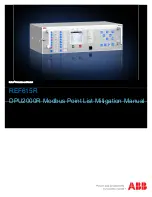
57
DNS
Domain Name System links names to IP addresses. When you access Web sites
on the Internet, you can type the IP address of the site or the DNS name. When
you type a domain name in a Web browser, a query is sent to the primary DNS
server defined in your Web browser’s configuration dialog box. The DNS server
converts the name you specified to an IP address and returns this address to your
system. From then on, the IP address is used in all subsequent communications.
Domain Name
The unique name that identifies an Internet site. Domain Names always have 2 or
more parts, separated by dots. The part on the left is the most specific, and the part
on the right is the most general.
Downstream rate
The line rate for return messages or data transfers from the network machine to the
user's premises machine.
DSL
Digital Subscriber Line technologies enhances the data capacity of the existing
twisted-pair wire that runs between the local telephone company switching offices
and most homes and offices. There are actually seven types of DSL service,
ranging in speeds from 16 Kbits/sec to 52 Mbits/sec. The services are either
symmetrical (traffic flows at the same speed in both directions), or asymmetrical
(the downstream capacity is higher than the upstream capacity). DSL connections
are point-to-point dedicated circuits, meaning that they are always connected.
There is no dial-up. There is also no switching, which means that the line is a direct
connection into the carrier’s frame relay, ATM (Asynchronous Transfer Mode), or
Internet-connect system.
DSLAM
A Digital Subscriber Line Access Multiplexer (DSLAM) is a network device, usually










































